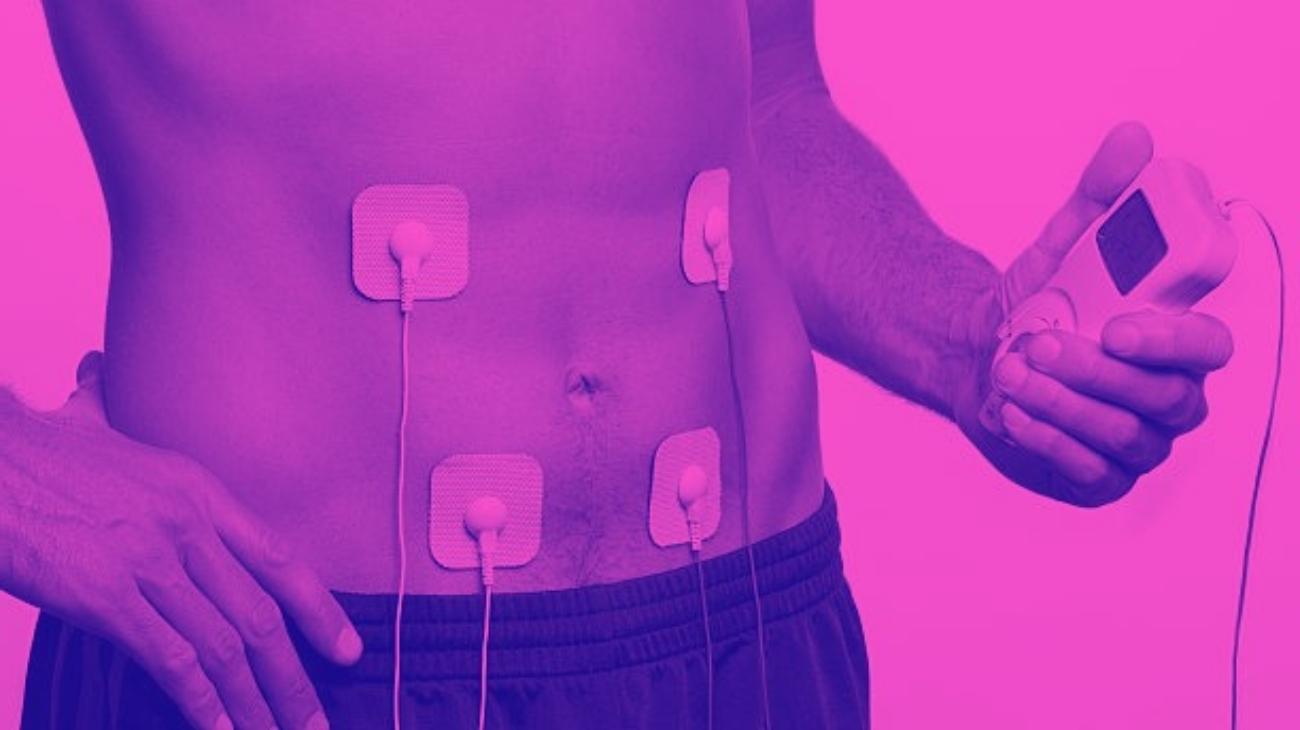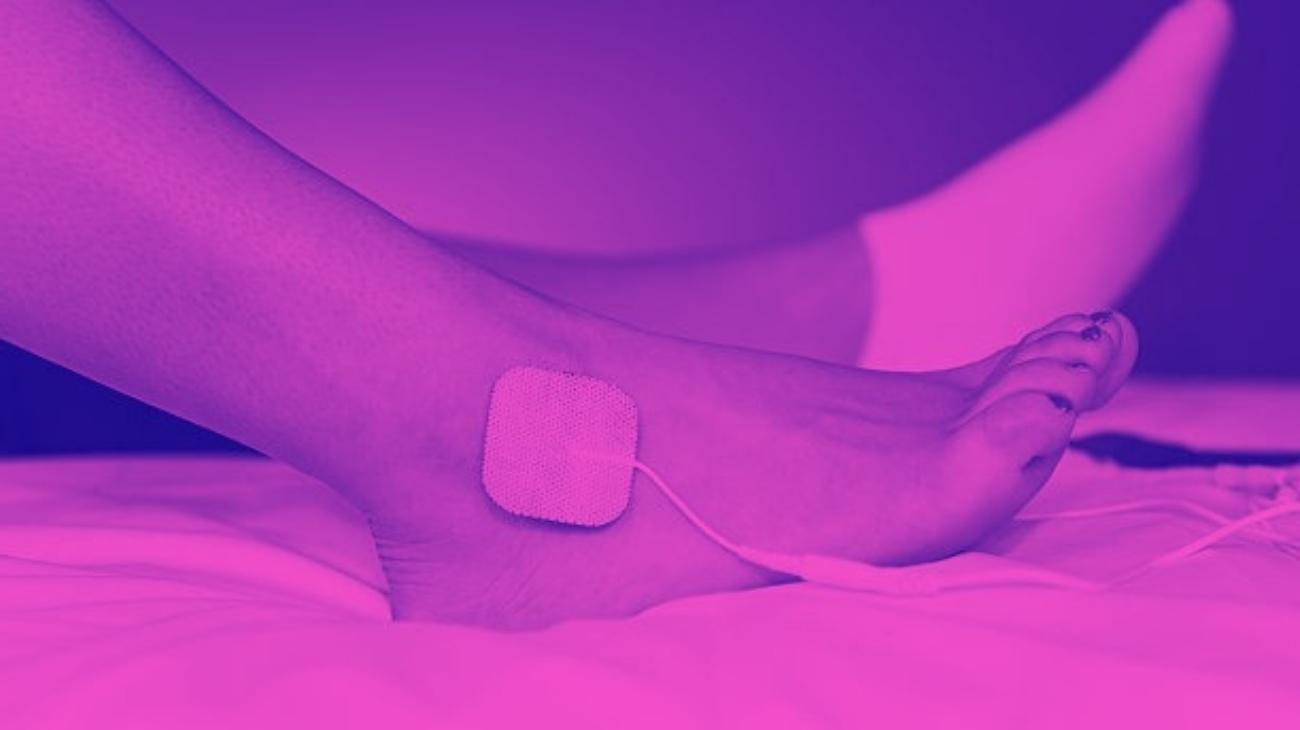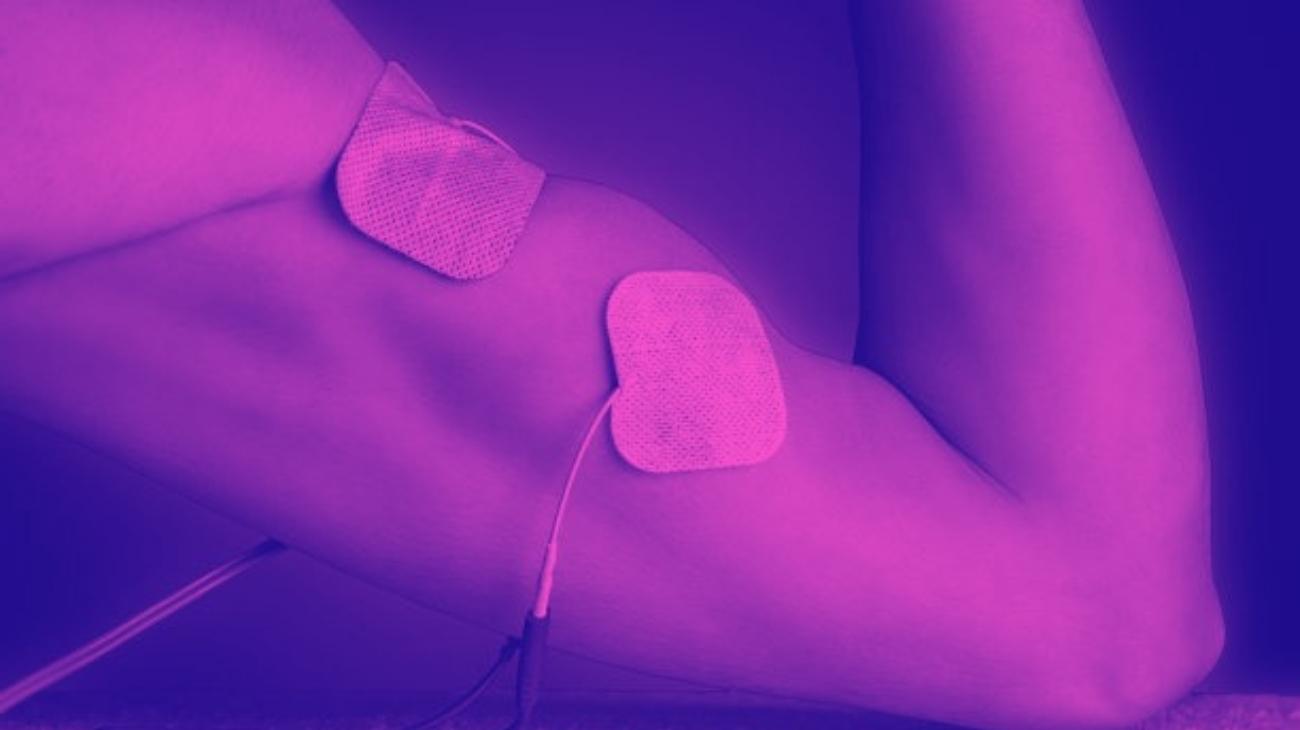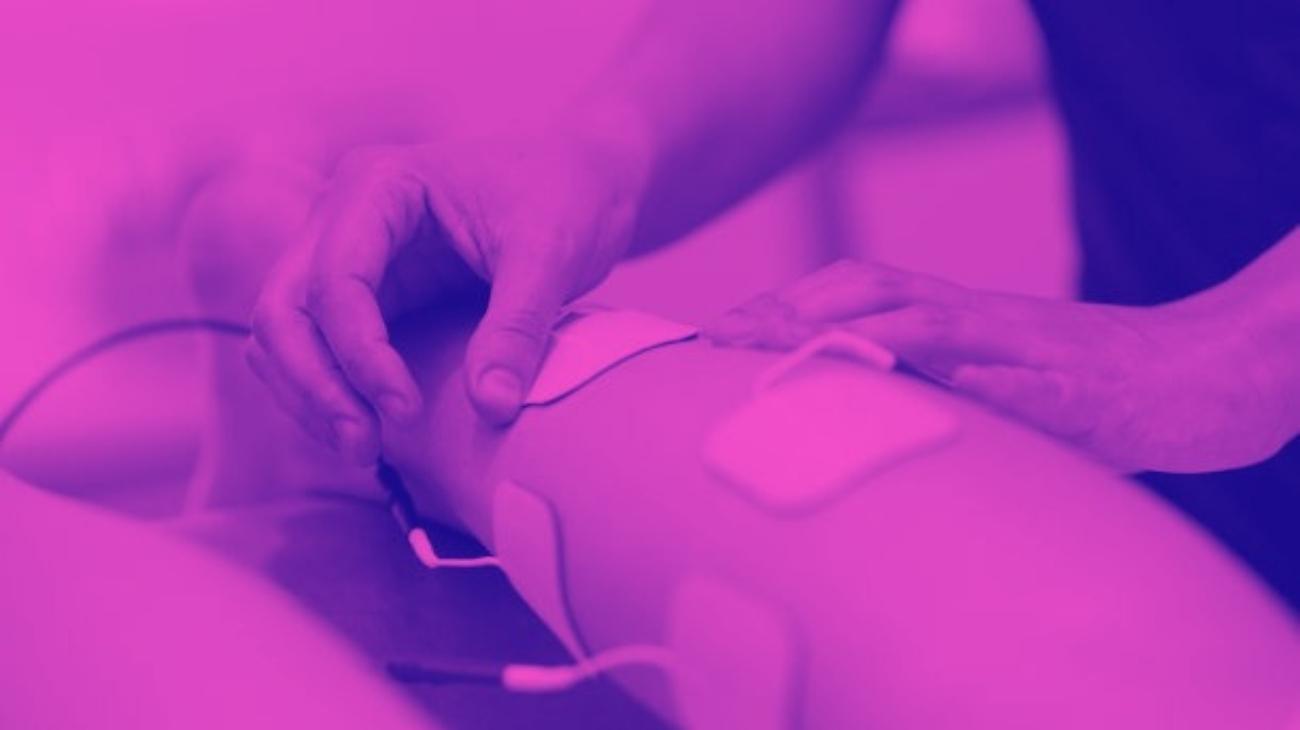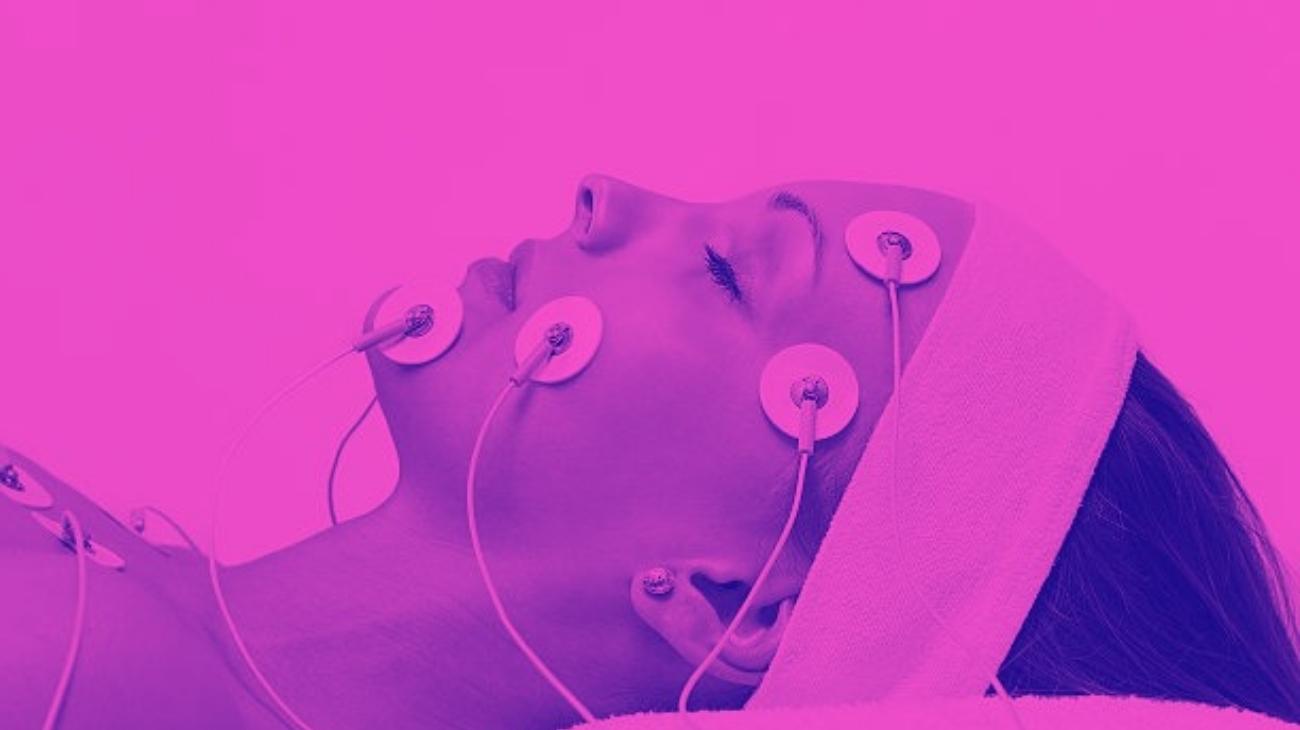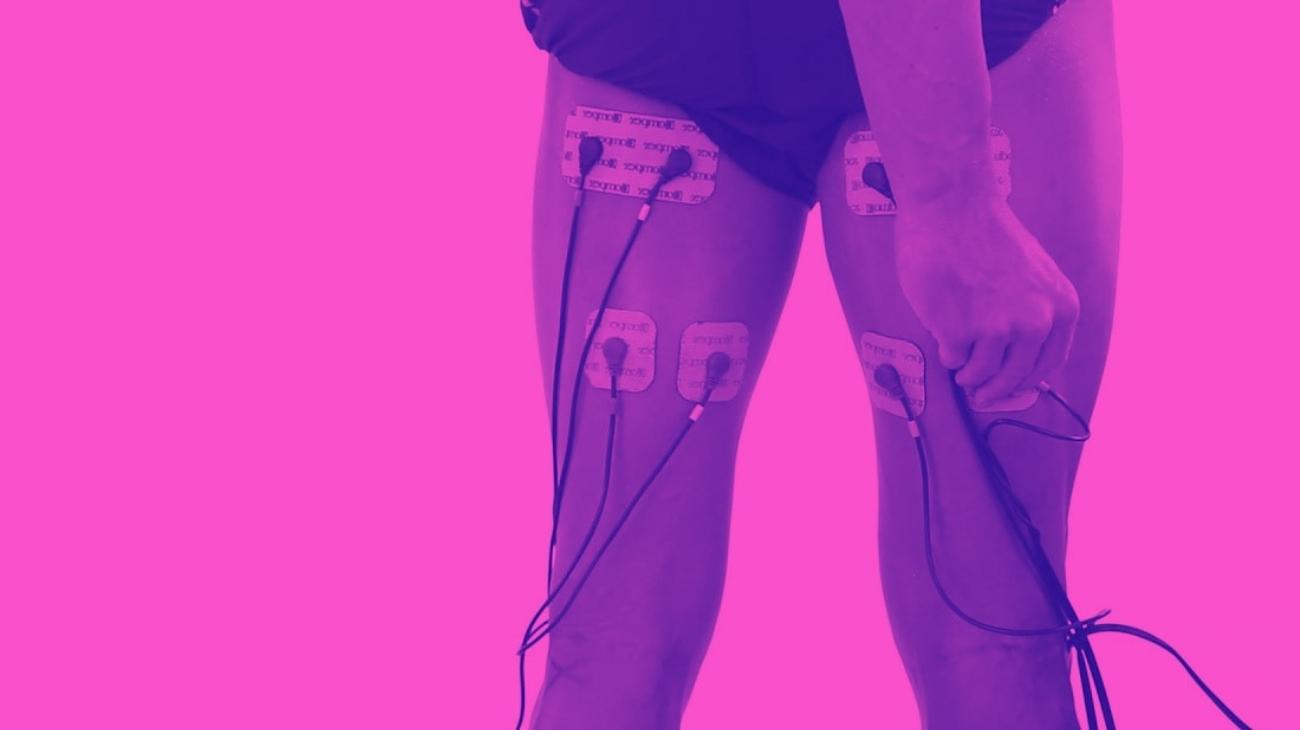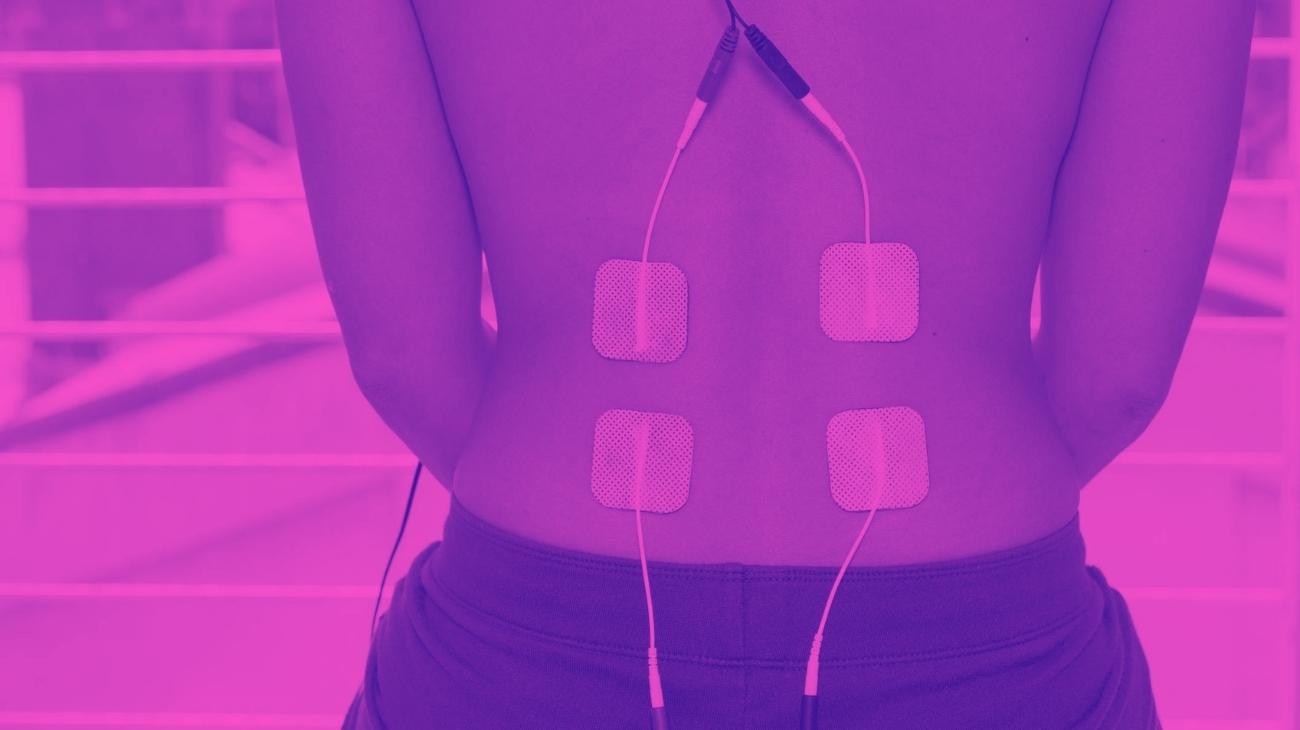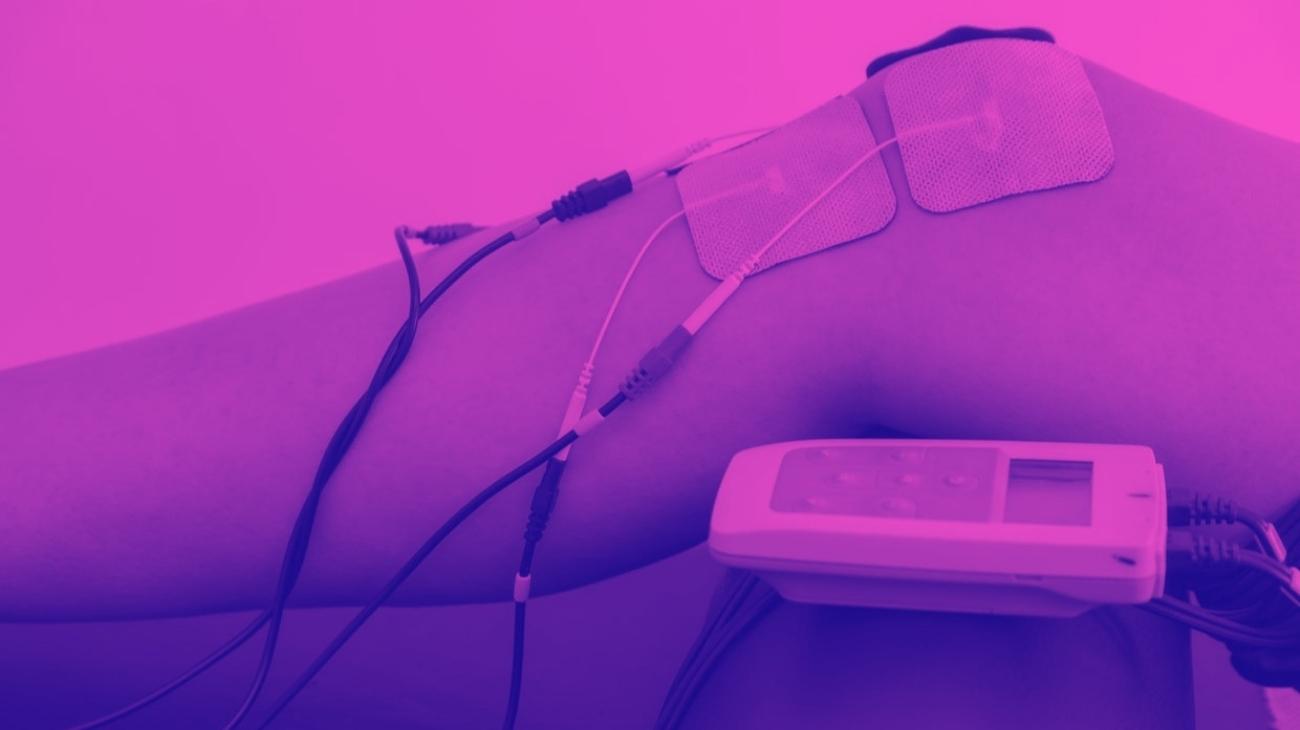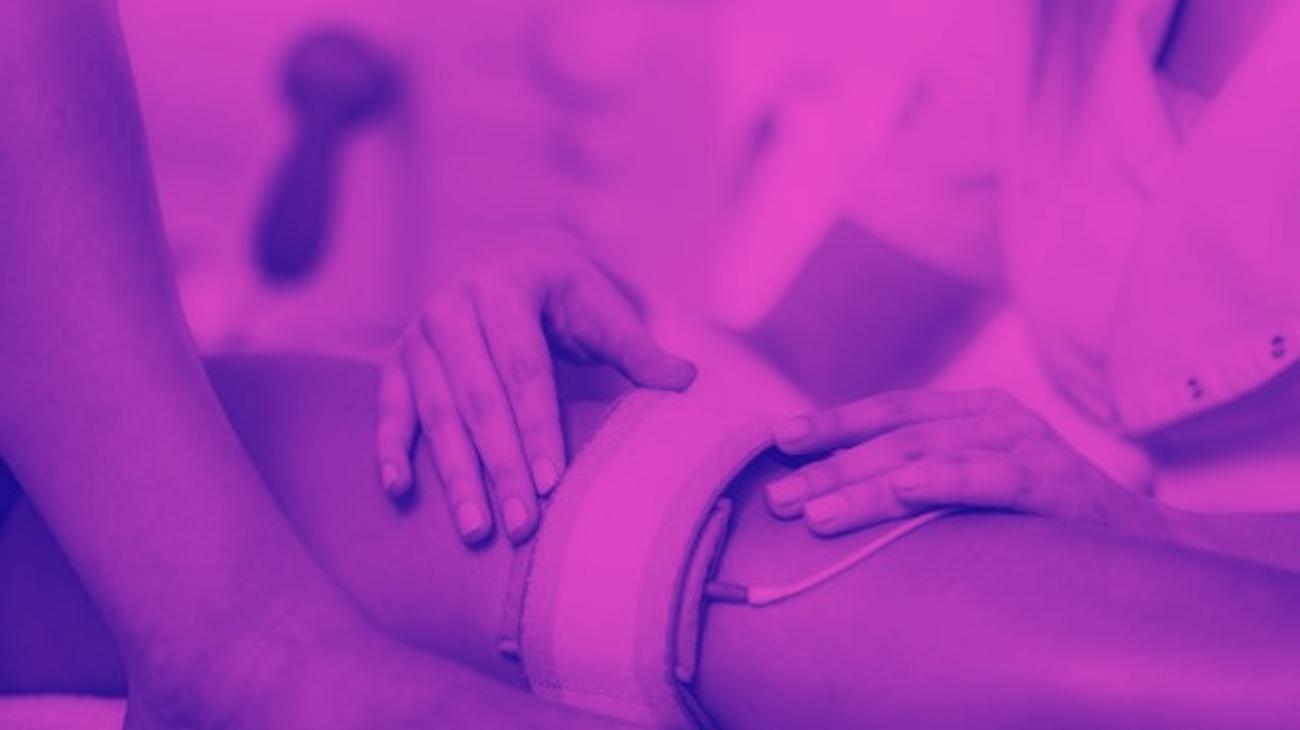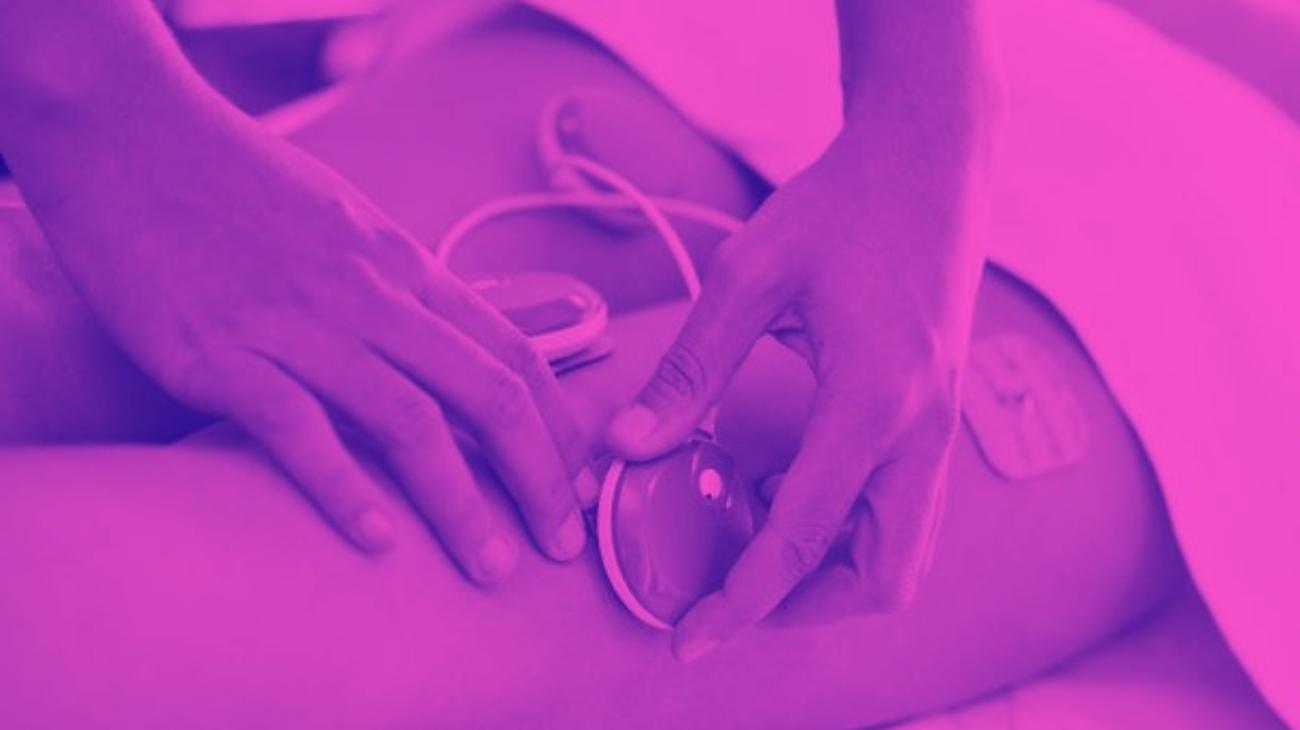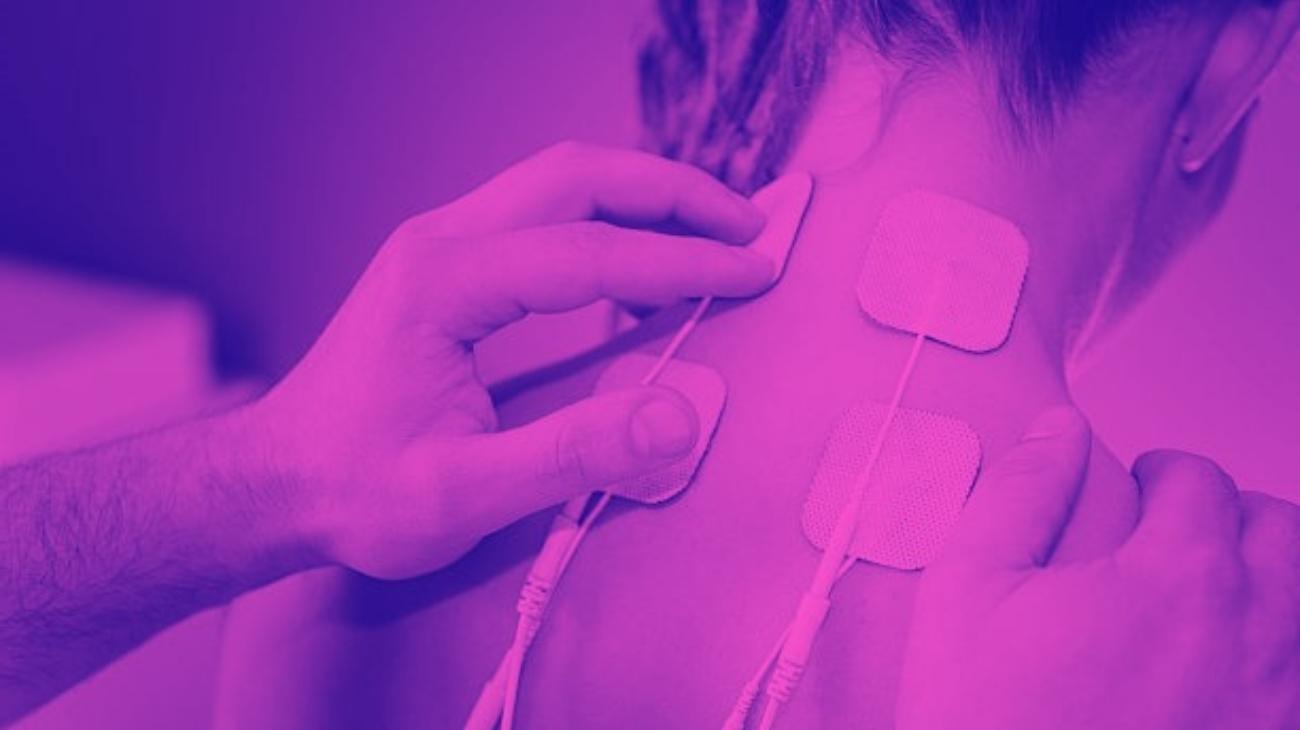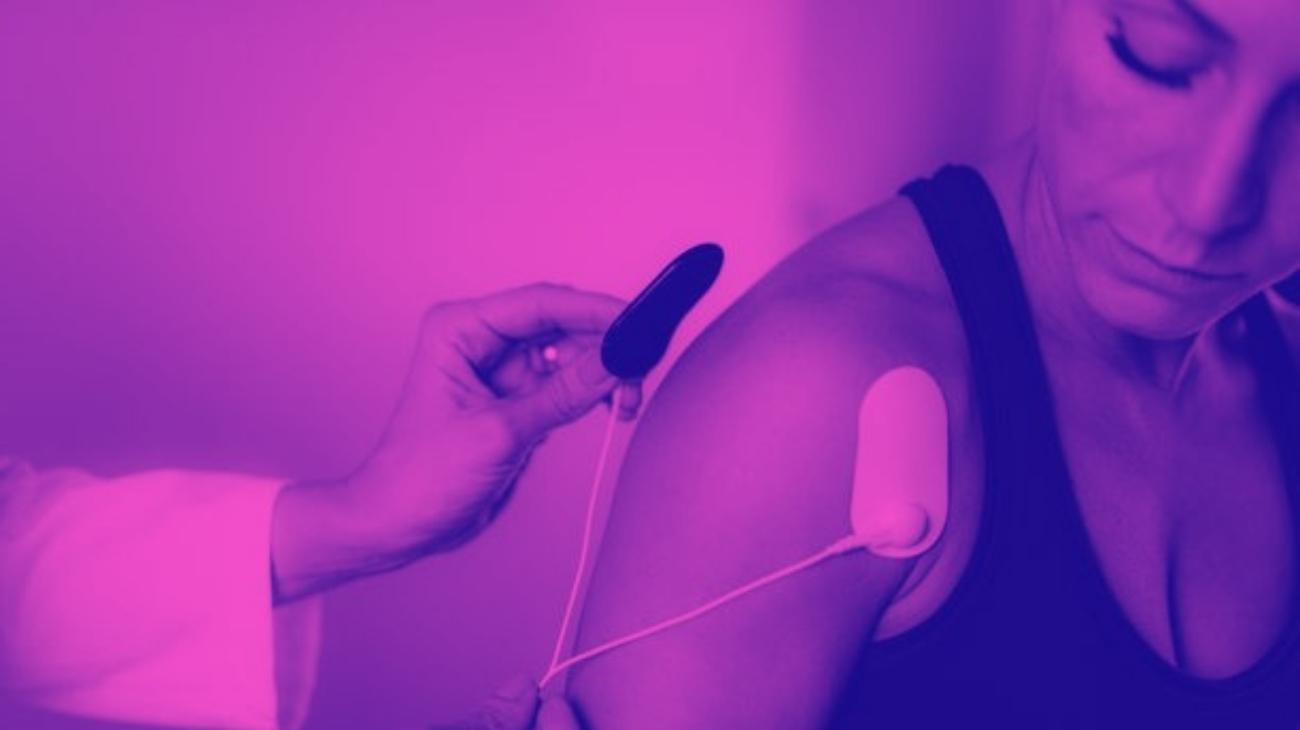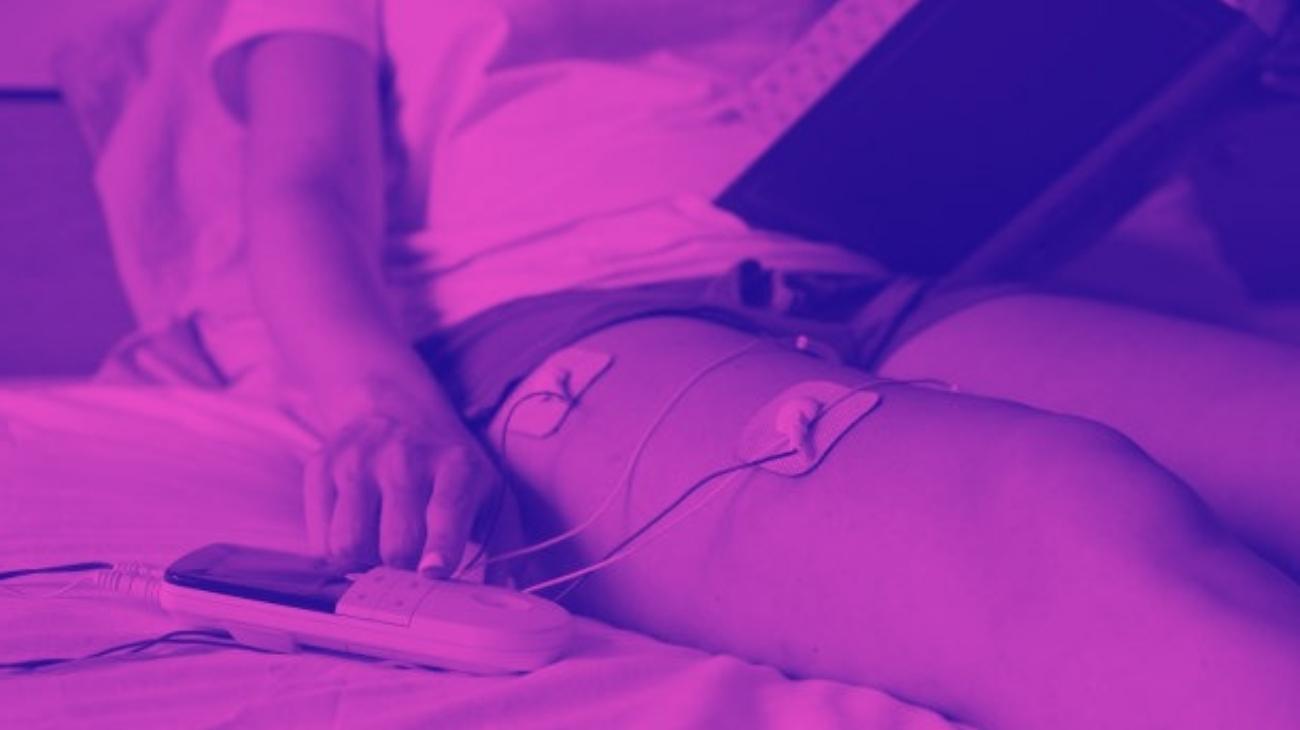- How to use a TENS machine to relieve elbow pain?
- Best TENS machines for elbow injury recovery
- How to use an EMS muscle electrostimulator for the elbow?
- Best EMS electrostimulators for strengthening elbow muscles
- Video: How to place electrodes pads on the elbow joint?
- More types of EMS electrostimulators and TENS machines you should know
- Most common types of elbow injuries
- Differences between TENS and EMS: Which one to use for elbow pain?
- Contraindications to the use of electrodes and electrotherapy
The elbow is one of the most important joints for specialized athletes of any discipline, so they receive a lot of wear and tear when performing impact sports, and exercises performed with an incorrect technique.
For this reason, injuries and pain in this joint are extremely common. Fortunately, TENS and EMS electrostimulation therapies have considerable ability to help with these problems, which is why, in this article, we will teach you how to use TENS and EMS therapies to relieve any elbow ailments.
How to use a TENS machine to relieve elbow pain?
Since TENS units are specifically designed to treat the symptoms of chronic and acute injuries, it is an excellent option to perform therapies for joint pain affecting the elbow.
Among the main benefits of this therapy we can mention the following:
- Increases pain resistance: the discharges emitted by TENS machines directly affect the pain receptors located in the elbow, specifically in the median, ulnar and radial nerves, increasing resistance during the session and several minutes later.
- Increases blood circulation: the heat generated by the electric currents applied to the elbow generates dilation of the blood vessels surrounding the joint, generating a local analgesic effect and a sensation of relief that is maintained until several minutes after the TENS session is over.
- Avoids reciprocal innervation: TENS therapy generates a simultaneous relaxation in the ulnar collateral ligament, radial collateral ligament, annular ligament and the square ligament, reducing the sensation of pain.
- Limits the nerve endings that produce pain: by means of this therapy, the groups of nerve endings responsible for the sensation of pain in the elbow are suppressed, generating immediate relief in the patient.
In consequence of all these effects, transcutaneous electrical nerve stimulation is an ideal treatment to relieve pain from a variety of elbow injuries, such as:
- Arthritis
- Dislocation
- Sprain
- Strain
However, it is necessary to emphasize the fact that TENS therapy is designed to relieve pain caused by injuries, not to cure them. This means that TENS electrotherapy will not serve as a means of healing for injuries, but rather to reduce symptoms and make recovery more pleasant.
Best TENS machines for elbow injury recovery
The popularity of this treatment and its effectiveness in reducing pain caused by injuries and disorders has led to the creation of a wide variety of TENS unit models. Here is a list of the best machines you can use to treat elbow pain:
- Type: Combo
- Channels: Dual
- Modes/Programs: 14 Modes
- Intensity: 25 Levels
- Wireless: Yes
- Heat Therapy: No
- Battery: Rechargeable Lithium
- Electrodes: 6 Pads
- Display: Digital
- Size: Not specified
- Portable and small size
- Includes carrying bag
- Rechargeable battery
- Includes user manual
- Accelerates recovery from sports injuries
- Does not specify measurements and weight
- Battery life not specified
- Does not include touch screen
The compact size of the device makes it incredibly practical and easy to carry, so you can use it anywhere you like quickly and discreetly. It is FDA approved, so it is completely safe to use, and its LCD screen gives you a full display of all settings so you can easily adjust your requirements.
- Type: Combo
- Channels: 4
- Modes/Programs: 24 Programs
- Intensity: Not specified
- Wireless: Yes
- Heat Therapy: No
- Battery: Rechargeable Lithium
- Electrodes: 24 Pads
- Display: Digital
- Size: Not specified
- Includes user manual
- TENS+EMS combo
- Includes carrying bag
- Reduces pain symptoms
- Rechargeable battery
- Battery life not specified
- No intensity levels specified
- No heat therapy
It has 4 channels of operation, 5 modes of TENS currents, 3 modes of EMS stimulation; and 24 predefined programs that generate low intensity electrical impulses to stimulate the nerve endings in the treated area, effectively blocking pain signals.
Hi-Dow - Dual channel TENS/EMS unit for physical therapy with 8 modes & 20 intensity levels & 4 pads
- Type: Combo
- Channels: Dual
- Modes/Programs: 8 Modes
- Intensity: 20 Levels
- Wireless: Yes
- Heat Therapy: No
- Battery: Rechargeable Lithium
- Electrodes: 4 Pads
- Display: Digital
- Size: 6" x 4" x 5" - 0.63 lbs
- TENS+EMS Combo
- Portable and small size
- Accelerates recovery from sports injuries
- Includes user manual
- Rechargeable battery
- Battery life not specified
- No carrying bag included
- No heat therapy
It has 8 preset programs and 20 intensity levels, along with a session timer function that you can set between 10 and 60 minutes. Its built-in rechargeable lithium battery provides excellent durability, and the package contains 1 XP Micro 8 electrostimulator, 1 set of large pads, 1 set of small pads, 2 cables, 1 power adapter, 1 user manual and 1 carrying case to take it wherever you need it.
- Type: TENS
- Channels: 1
- Modes/Programs: Not specified
- Intensity: Not specified
- Wireless: Yes
- Heat Therapy: No
- Battery: Not specified
- Electrodes: 1 Pad
- Display: No display
- Size: 6.22" x 1.42" x 3.27"
- Improves joint mobility
- Improves blood circulation
- Accelerates recovery from sports injuries
- Reduces pain symptoms
- Wireless electrodes
- No intensity levels specified
- Does not specify weight
- Not for muscle hypertrophy
Its efficient use of TENS technology allows it to block pain signals before they reach the brain, making it a safe method of treating ailments. It also has a long-lasting lithium battery and an energy-efficient function, which turns the device off every 20 minutes. One of the best devices on the market in terms of portability, discretion and functionality.
- Type: Combo
- Channels: 2
- Modes/Programs: 10 Programs
- Intensity: 20 Levels
- Wireless: No
- Heat Therapy: No
- Battery: Rechargeable Lithium
- Electrodes: 8 Pads
- Display: LCD
- Size: 3.3 x 0.2 x 2.5 inches
- Reduces pain symptoms
- With adjustable timer
- Accelerates recovery from sports injuries
- Includes carrying bag
- Improves blood circulation
- No battery life specified
- No weight specified
- No heat therapy
It has 10 pre-programmed massage modes and 20 intensity levels that focus on treating various types of pain, and a session timer function that allows you to set the duration of these between 10 and 60 minutes. Additionally, it has a lithium battery that allows you to apply therapy for more than 20 hours at a time.
How to use an EMS muscle electrostimulator for the elbow?
Unlike TENS, muscle electrostimulation is a training therapy, in which currents of between 70 Hz and 150 Hz are used to cause muscle contractions that stimulate their strength and elasticity, which is why it should only be used on areas composed of muscle.
In terms of its usefulness for elbow ailments, EMS is not an optimal therapy, since this is a joint that contains virtually no muscle. For this reason, a therapy that produces contractions may be counterproductive if the joint is undergoing rehabilitation for injury.
However, its usefulness can focus on strengthening the muscle groups responsible for the stability and mobility of the elbow, such as the coracobrachialis and anterior brachialis muscles, as well as the triceps brachii.
In this way, benefits such as the following can be realized:
- Increased muscle strength: The contractions caused in the muscles when using the shocks cause an increase in strength in the brachial muscles.
- Reduction of stress on the elbows: the increase in muscle strength allows a uniform distribution of weight along the arm, reducing the impact received by the elbow joint.
- Increased hypertrophy: the reduction of the recovery time of the muscle fibers in the triceps brachii generates an increase in muscle mass, reducing the tension produced when performing explosive movements involving the elbow, such as the bench press.
- Reduction of muscle tissue loss: sedentary lifestyles and chronic injuries, in addition to age, are very relevant factors that influence the loss of muscle tissue. The muscle contractions generated by EMS devices cause an activation of the muscle fibers which reduces the loss of mass.
- Increased blood supply: the vasodilation caused by the electrical impulses increases the capacity of the muscle to receive blood, which in turn generates an analgesic effect and reduces the recovery time of muscle fibers.
Best EMS electrostimulators for strengthening elbow muscles
While muscle electrostimulation is a contraindicated method for the treatment of elbow pain, you can take advantage of its benefits for the muscles surrounding the joint, which are the biceps brachii, the coracobrachialis muscle and the triceps brachii. The best devices you can use for this are the following:
- Type: Combo
- Channels: Normally 2 (Dual)
- Modes/Programs: 6 Programs
- Intensity: Not specified
- Wireless: Yes
- Heat Therapy: No
- Battery: Rechargeable (7 hours of use)
- Electrodes: 2 Pods and 6 electrodes
- Display: Smartphone
- Size: Not specified
- Reduces pain symptoms
- Portable and small size
- TENS+EMS Combo
- Wireless electrodes
- Rechargeable battery
- Size and weight not specified
- No intensity levels specified
- No heat therapy
It has a rechargeable battery that can provide an autonomy of up to 7 hours per charge, 6 unique training programs focused on different branches of fitness to help you achieve your goals, and compatibility with your mobile for easy use. It is recommended for those physically active people looking for a compact, portable and natural way to deal with workout-related ailments.
- Type: Combo
- Channels: -
- Modes/Programs: 15 Programs
- Intensity: Not specified
- Wireless: Yes
- Heat Therapy: No
- Battery: Rechargeable Lithium
- Electrodes: 4 Pads
- Display: No display
- Size: Not specified
- TENS+EMS Combo
- Control from mobile app
- Reduces pain symptoms
- Includes user manual
- Rechargeable battery
- Does not specify dimensions and weight
- Battery life not specified
- Does not specify intensity levels
With more than 400 modes of use and a variety of intensity levels, the PowerDot 2.0 is one of the most complete electro stimulators available, as its functions focus on muscle recovery, improved physical performance, and pain relief. All these features make it the leading choice for the immediate treatment of any pain, whether caused by injury or illness.
- Type: Combo
- Channels: 2
- Modes/Programs: 24 Modes
- Intensity: Not specified
- Wireless: No
- Heat Therapy: No
- Battery: Rechargeable Lithium (up to 20 hours)
- Electrodes: 6 electrodes
- Display: LCD
- Size: Not specified
- Includes user manual
- Reduces pain symptoms
- Long battery life (up to 20 hours)
- Portable and small size
- Good quality
- Few intensity levels
- Does not specify size and weight
- Not suitable for muscle hypertrophy
It has multiple modes of use and its A-B output channel allows you to apply two types of massage simultaneously, making it one of the most versatile devices available on the market. The package includes 1 control, 1 protective case for the TENS unit, 3 pairs of electrodes, 4 power output cables, 1 USB cable, 1 user manual, 1 plastic case and 1 belt clip.
- Type: Combo
- Channels: 2
- Modes/Programs: 35 Programs
- Intensity: 50 Levels
- Wireless: No
- Heat Therapy: No
- Battery: 3 AAA batteries included
- Electrodes: 4 Pads
- Display: Digital
- Size: Not specified
- Accelerates recovery from sports injuries
- TENS+EMS Combo
- Portable and small size
- Improves blood circulation
- Includes user manual
- Does not specify size and weight
- No heat therapy
- Powered by AAA batteries
This device is powered by 3 AAA batteries that are included in the package. It does not require frequent changes or recharging, due to its efficient power consumption. Additionally, it has a dual channel function, so you can work different parts of the body simultaneously as required.
- Type: Combo
- Channels: Dual
- Modes/Programs: 12 Modes
- Intensity: 30 Levels
- Wireless: Yes
- Heat Therapy: No
- Battery: Batteries
- Electrodes: 16 Pads
- Display: Digital
- Size: Not specified
- Includes carrying bag
- Improves blood circulation
- Portable and small size
- Improves joint mobility
- TENS+EMS Combo
- No battery type specified
- No heat therapy
- Does not specify size and weight
It offers a professional solution through its 12 massage modalities with 30 intensity levels, which you can easily adjust to adapt the therapy to your needs. Additionally, its dual channel function allows you to apply different modalities on the A and B channels of the stimulator, allowing you to treat two different areas of the body, or even two different people, simultaneously.
Video: How to place electrodes pads on the elbow joint?
Electrodes for elbow
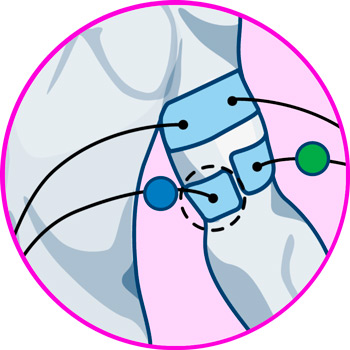

- For golfer's elbow: To begin with, the area of pain should be located in the middle of both pads, so if the pain is focused on the inside of the elbow, be sure to position the first electrode on the vastus medialis of the triceps brachii, and the second on the pronator teres muscle.
- For tennis elbow: In case the session is about tennis elbow, you should position one electrode on the head of the biceps brachii, while the second one should be on the upper part of the brachioradialis muscle, just on the border with the pronator teres.
More types of EMS electrostimulators and TENS machines you should know
Most common types of elbow injuries
The elbow is among the most used joints in the body, as it is vitally important for arm mobility. These joints take a tremendous amount of impact in sports such as weightlifting and everyday activities, which can impact their function.
The most common injuries to the elbows are as follows:
- Lateral epicondylitis: is an elbow injury caused by wear and tear and overuse. It consists of an inflammation of the tendons that join the forearm with the outer part of the elbow, producing pain and sensitivity in this area.
- Medial epicondylitis: is an inflammation of the flexor pronator tendons that originates in the elbow, producing pain in the medial epicondyle when flexing or pronating the wrist.
- Olecranial bursitis: is an ailment that occurs in the back of the elbow due to inflammation in the region of the olecranon, where the triceps tendons are inserted. This injury causes swelling, pain when moving the elbow, inflammation of lymph nodes among other symptoms, and can be caused by infections, sudden blows and even sprains.
- Elbow fracture: an elbow fracture consists of the breakage of one or more of the three bones that make up the joint. Its most frequent causes are falls or direct impacts to the joint or twisting. The clearest symptoms to identify an elbow fracture are pain, swelling, stiffness and bruising.
- Elbow sprain: this injury occurs when, due to a fall or strong impact on the forearm, the joint is forced to perform a movement for which it is not naturally designed, which generates an exaggerated extension of the ligaments that compose it, causing them to tear partially or completely.
Differences between TENS and EMS: Which one to use for elbow pain?
To understand how electrostimulation therapies can affect or benefit the treatment of elbow pain, it is necessary to clarify the differences between the two treatments to define their range of effect on elbow pain.
Firstly, Transcutaneous Electrical Nerve Stimulation, abbreviated as TENS, is a treatment that seeks to reduce the nerve impulses that cause pain in the elbow joint, through the use of various types of currents of varying intensity, ranging from 1 to 250 Hz, which aim to increase the pain threshold. This is achieved by acting on the ulnar, radial and median nerves that pass through the joint and the entire upper extremity.
On the other hand, muscle electrostimulation or EMS is a stimulation technique used to generate contractions in the muscles that give stability to the elbow, such as the brachioradialis and carpal flexor, by means of a high intensity current, designed to mimic the nerve impulses that contract or relax a muscle. This therapy is used for aesthetic purposes, to increase and tone muscle mass, or to improve muscle performance
Knowing this, it can be affirmed that the most adequate therapy for the treatment of elbow pain is transcutaneous electrical nerve stimulation, because by means of this therapy you can intercept the pain transmitters of the radial, median and ulnar nerves that flow through the joint. In addition to this, the amount of muscle in the elbow is very small, since it is formed by bone, cartilage, ligaments and fluids, so the use of this therapy is more efficient than EMS.
On the other hand, muscle electrostimulation therapy, or EMS, is contraindicated for the treatment of pain and during tendon injuries , since its main focus is on muscle training and rehabilitation after recovery from the injury, so its effectiveness is limited to areas with abundant muscle tissue. In addition to this, the muscle contractions generated by EMS shocks can be counterproductive for injuries that cause joint pain.











